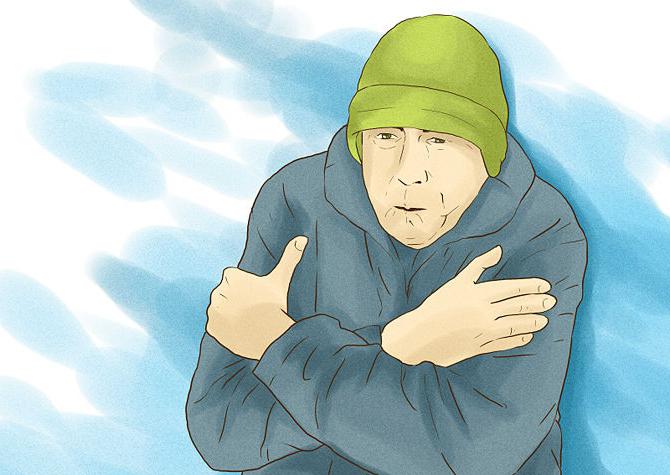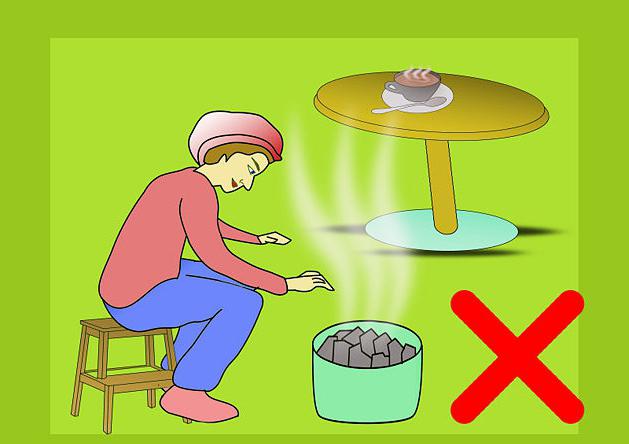The human body is able to withstand a lot, but there are boundaries beyond which can lead to tragic consequences. A factor such as low air temperature can provoke disruption of vital activity. When a person is exposed to cold for a long time, hypothermia can occur. In this case, the body temperature drops to critical levels, the work of all systems and organs is disrupted.
Causes
General hypothermia often occurs in physically malnourished, forcedly immobilized people, young children, the elderly and those who are unconscious. The situation can be aggravated by injuries, strong winds, wet clothes, drug or alcohol intoxication, high humidity, overwork. Hypothermia can even be caused by swimming in a cool pond. Moreover, its degree and consequences will depend on how long the stay in the water was.
Signs
Recognizing the symptoms of hypothermia is not so difficult. At first, a person feels a surge of strength, excessive excitement, but at the same time, his skin turns pale, cyanosis of the nasolabial triangle is observed. Then shortness of breath begins, the pulse quickens, a strong chill appears. If no therapeutic actions are taken at this moment, the symptoms will progress: the excitement will be replaced by apathy, lethargy, lethargy. A person will not be able to move, will become weak, feel drowsiness. Often people lose consciousness in such a situation. If you ignore the hypothermia of the body, the consequences can be terrible. Failure to help leads to the cessation of respiratory and cardiac activity, as a result of which a person dies.
Frostbite and hypothermia. Degrees
There are three degrees of hypothermia:
- Easy. Body temperature drops to 32-34 degrees. The patient feels chills, hardly speaks due to trembling lips and lower jaw. He has a bluish tinge of the nasolabial triangle, pale skin color, the body is covered with goosebumps. The pressure remains within normal limits, in some cases it rises slightly. A person can move independently. Foci of frostbite of the first or second degree may occur.

- Medium. Body temperature drops to 29-32 degrees. The skin integuments become cold to the touch, acquire a bluish tint. The patient experiences drowsiness and apathy, what is happening becomes indifferent to him. Hypothermia at this stage is characterized by a state of “numbness”: a person does not respond to speech addressed to him, external stimuli. Pressure decreases somewhat, breathing becomes rarer, and the pulse slows down. The ability to move independently is lost. Foci of frostbite can be up to the 4th degree. If you do not help the patient, various complications may develop, and in some cases death may occur from hypothermia.
- Heavy. Body temperature drops below 31 degrees, the pulse slows down to 30-35 beats, a person loses consciousness. The mucous membranes and integuments of the skin acquire a pronounced bluish tint, hands, feet, and face swell. The person has cramps, the condition goes into a coma. Pressure decreases very sharply, and breathing becomes extremely rare. This stage of hypothermia is characterized by severe frostbite. The patient needs emergency help, otherwise a fatal outcome cannot be avoided.
How many degrees of frostbite
They are distinguished by four:
- 1st degree. First, a person feels a tingling sensation, a burning sensation, then the affected area is numb. Itching of the skin, pain (such symptoms can be mild or pronounced). The affected area turns pale, after warming it turns red, may have a crimson-red hue. Swelling develops, but tissue necrosis does not occur. A week after the incident, peeling of the skin, usually insignificant, can be observed. By the fifth or seventh day, complete recovery sets in.

- 2nd degree. The patient in the initial period can observe a cooling, blanching of the skin, loss of sensitivity, however, such signs occur with frostbite of any degree. A symptom characteristic of this stage is the appearance in the first days after the incident of bubbles filled with a clear liquid. Restoring the integrity of the skin integument occurs in one to two weeks, scars and granulations are not formed. At this stage of frostbite, the pain after warming is longer and more intense than at the previous one, itching, burning are worried.
- 3rd degree. Bubbles form on the skin, as in the previous case, but they are filled with bloody contents, have a blue-purple bottom that is immune to irritation. All skin elements die, scars and granulations develop. With frostbite of the feet or hands, the nails go off, they do not grow back again, and if they grow back, they are deformed. In the second or third week after the incident, the rejection of dead tissue ends and scarring occurs. It lasts for about one month. Pain is more pronounced than in the previous stage of frostbite.

- 4th degree. All layers of soft tissue are dead, joints and bones can be affected. The frostbitten area of the skin becomes bright bluish, in some cases it may have a marble color. After warming, swelling immediately develops, it is rapidly increasing. Bubbles in this case do not form, they are characteristic of areas with a lesser degree of frostbite. The skin temperature in the affected area is much lower than in the surrounding areas.
First aid for hypothermia
The main thing that needs to be done is to stop the effects of cold on the human body. To do this, it should be brought or brought into a warm room. If this is not possible, it is necessary to put the patient in a place protected from rain and wind. Immediately you need to get rid of wet clothes, and then wrap the victim in a dry blanket or put on dry clothes. If a person is conscious, he should be given hot tea, water, fruit drink or milk.
With water
Hypothermia of the body can be eliminated if the patient is placed in a warm bath, the water temperature must be gradually increased, but not more than 40 degrees. At the end of water procedures, the victim should be laid in a warm bed and overlaid with heating pads. If not, hot water bottles can be used.
What to do in critical cases
In the case when a person is unconscious, it is necessary to control his pulse and respiration. If they are absent, you must immediately proceed to artificial respiration and indirect heart massage. When first aid for hypothermia is provided, a person should be taken to a hospital, even if his condition is satisfactory at first glance and does not cause concern. Only a doctor can identify some complications.
First aid for frostbite
Frostbite is inseparable from hypothermia, so the initial help is to warm the victim and resume blood circulation. If your fingers are slightly frostbitten, you can warm them by placing them in the armpits. If the nose is frostbite, warm hands will be enough to warm it. But do not allow the warmed area to freeze again. The more often the skin freezes and warms up, the more serious the damage can be. Usually mild frostbite by itself passes after one to two hours. If rubbing does not help to eliminate the immobility of the skin, you should consult a doctor.

So, as already mentioned, first you need to bring the patient into a warm room, free the body from shoes and clothes. Do not place a person near a heat source: fireplace, heater, battery, hot stove. It is also forbidden to use a hair dryer - the victim can easily get a burn, because he does not feel a frostbite part of the body. If there is no swelling and blisters in the affected area, wipe it with alcohol or vodka, and then massage your skin with clean hands in the direction of the heart. In the presence of blisters, massage should not be done, as additional pain and infection can be caused. Get ready that it will take a very long time to rub the skin of the patient until they become soft, red and warm. Massage should be carried out very carefully in order to avoid damage to blood vessels. After warming the skin, a sterile dressing should be applied to the affected area.
Indispensable condition
As already mentioned, a visit to a doctor is mandatory even for minor injuries. With hypothermia and frostbite, a decrease in the body's defenses occurs, the functioning of the vessels and the brain is disturbed, and stress occurs. Therefore, treatment should be professional.
Finally
As you probably know, the best way out of an unpleasant situation is to simply not get into it. Do not leave your house in a severe frost unnecessarily, because the extreme sensations that hypothermia of the body gives you do not need anything.